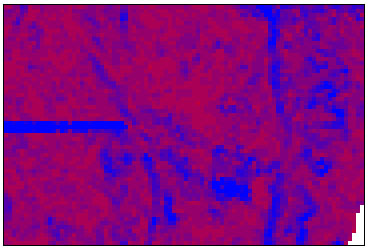Living in the Past
Well, yes, we all do it, being archaeologists and everything, and yes my career is in ruins, ho ho. However, this week, apropos of not very much, I have been specifically thinking about Living in the Past the 1970s TV series, which is one of the main reasons I ended up as an archaeologist.
Living in the Past was a BBC series which ran in, I think, 1978. A producer named John Percival persuaded a group of 12 people to spend a year holed up somewhere in the rural south-west living the life of Iron Age peasant farmers. About once a week a TV crew would drop in on them, bother them about what they had been up to over the last few days and record some more substantial activity, such as harvest or pig-killing, in more detail. It went out in twelve episodes, one for each month of the year. It was worthy, low key and utterly gripping television.
If it is remembered at all today it is for the (in)famous nude fishing scene or as the ancestor of the reality TV boom of the 1990s. The show’s entry on the BFI’s Screenonline website lays great stress on how both the historical reconstruction and the tensions within the group of volunteers foreshadowed everything from Big Brother to the 1900 House. It also had a television afterlife, being satarised by the Comic Strip team in an episode from the early 80s. However, watching one of the episodes again (September, courtesy of the BFI website) I noticed more differences than similarities to its modern cousins.
The first thing that struck me is the sheer scale of what was attempted by Living in the Past. These people spent the whole of 1977 in a round house in the woods. They missed the Silver Jubilee, ‘New Rose’ by the Damned, about eight different record contracts for the Sex Pistols, 52 episodes of the Generation Game, Joyce Mckinney and the Mormon missionary: all in the cause of the experiment. They also made everything themselves over the year, the buildings, their tools and their clothes. It is true there were disputes within the group, but these were usually earnest discussions over the authenticity of particular techniques rather than screaming meltdowns. One family left early, but even they stuck it out for eight or nine months.
John Percival was clearly aware that what he was asking the volunteers to do was, of itself, very very difficult. He didn’t complicate matters by setting up ‘team-building’ challenges and rewards – he just asked the volunteers to try a complete the full range of farming activities over the year. To my mind the major difference between Living in the Past and more recent reality TV is that everyone concerned wanted to the volunteers to succeed. The BBC clearly felt that success would make better television than acrimonious failure and so made sure that the volunteers were as well prepared as possible. They spent the months before the project learning particular craft skills and, because everything was built by the volunteers, the transition to full iron Age conditions had to take place gradually over the first few months of the project.
At the height of the reality TV boom the BBC attempted to repeat the trick with Surviving the Iron Age, which used the existing reconstructed roundhouses at Castell Henllys hillfort to house a new generation of volunteers. I never managed to see any of this, and it is inexplicably impossible to find on youTube, but the reviews were not promising. The one fact I have picked up about this show is an interesting difference in the archaeological advice that was used. On Surviving the Iron Age it was thought essential for reasons of authenticity that the ‘tribe’ had a chief – and then there was debate about whether it was ok to have an election for the job. Living in the Past attempted to recreate an egalitarian peasant community, chiefs and hierarchies were conspicuous by their absence. Oddly, if you look at the academic literature on the Iron Age from the 1970s (early editions of Barry Cunliffe’s Iron Age Communities in Britain for example) then the model of society suggested is of hierarchical warrior elites. However, by the time Surviving the Iron Age was being made, collections of papers like Adam Gwilt and Colin Haselgrove’s Reconstructing Iron Age Societies were much more focussed on the plebs.

Simon has plainly spent his Christmas data-processing. He sent me a reworked version of his resisitivity plot of the New Laund Enclosure which he has been tweeking to try and counteract the effects of all the rain and the problematic geology. As you can see it is now a lovely purple colour but also the curve of the ditch is much clearer. Simon thinks it looks as if it is stopping before the north edge of the surveyed area.
The Christmas beer included some from a brewery in Cheddar called Totty Pot Ale. ‘Look’ I said ‘It’s beer called after a cave with Mesolithic and Neolithic burials – how cool is that.’ – not very apparently.
Rick

that’s looking interesting …if rather psychedelic 🙂
it’s even less of a circle than we thought, whatever happens to it further to the west where we haven’t surveyed yet